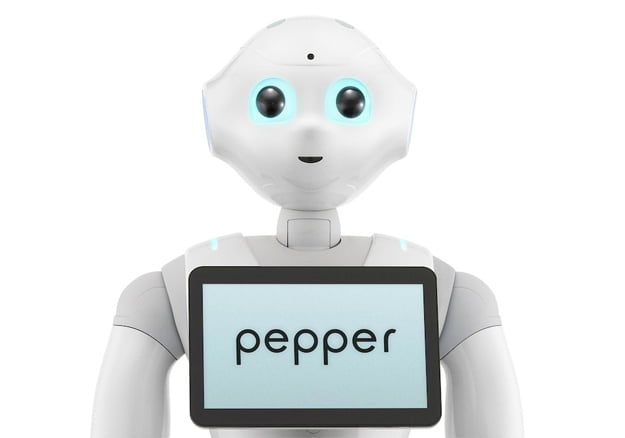


0845 528 0404

0845 528 0404



0845 528 0404

0845 528 0404
Pepper Care
Pepper is the world’s first social humanoid robot able to recognize faces and basic human emotions. Pepper was optimized for human interaction and is able to engage with people through conversation and his touch screen.



Hospitals and healthcare facilities may find Pepper Robot, a humanoid robot created by SoftBank Robotics, to be an invaluable asset. Pepper may offer a variety of services that can help improve patient care and support healthcare professionals thanks to its cutting-edge technology and endearing personality. We’ll look at a few advantages of employing Pepper in a hospital context in this article.
Support and Conversation with Patients
Pepper has the ability to engage and engage patients in conversation.
It can help people feel less alone and isolated by giving them information, entertainment, and support.
For instance, Pepper can entertain patients by playing games, telling tales, and delivering educational materials, improving their entire hospital experience.
Language Proficiencies
Pepper is a great option for hospitals with a diverse patient population because it can speak in a variety of languages. In order to give patients a more individualized experience, Pepper may communicate with them in their preferred language.
Employee Support
Pepper can help medical workers by carrying supplies and giving directions, among other things.
This can help free up staff time so they can concentrate on more difficult responsibilities like patient care.
Data Gathering
Patient information like symptoms, vital signs, and medical histories can be programmed into Pepper.
This can be utilized to give medical professionals like doctors and nurses useful insights and enhance patient care.
Safety COVID-19
By reducing physical contact between patients and workers, pepper can help lower the chance of COVID-19 transmission.
Without making direct physical touch with patients, Pepper can communicate with them, provide them information, and gather data.
Personalization
Pepper is programmable to identify specific patients and keep track of their preferences.
As a result, Pepper may be able to offer a more individualized service and foster closer bonds with clients.
Medical Instruction
Pepper can bring interest to programs for teaching about healthcare.
Pepper is a humanoid robot that can interact with students during learning exercises and provide them tailored feedback. Learning could become more interesting and remembered as a result of this.
Cost-Effective
It is economical to use Pepper in a medical setting.
Staffing expenditures are decreased because there is no longer a need to hire and train additional employees. Also, renting Pepper enables medical facilities to experiment with the technology without committing long-term.
Marketing and Branding
Pepper may be personalized with branded clothing and accessories, giving hospitals a chance to improve their branding and marketing initiatives. Patients and their family may have a memorable and special experience thanks to this.
In conclusion, employing Pepper in a hospital setting can help patients, medical staff, and hospitals in a variety of ways.
With its cutting-edge technology, multilingual capabilities, and endearing personality, Pepper can help staff with a variety of duties while giving patients a special and memorable experience.
Also, it can help to enhance patient care and lower the chance of COVID-19 transmission.
As a result, Pepper can be a great investment for any hospital aiming to improve overall operations and the patient experience.
Pepper the robot was designed to interact with people and be expressive, as it is equipped with a set of sensors and interactive equipment, allowing it to lead a discussion with the user. In addition, it is equipped with a set of sensors, such as laser sensors, to manage its safety and that of people around.
Choregraphe software
Choregraphe is the graphic software created by Softbank that allows you to create applications on the Pepper robot. An application can be composed of “boxes” that can make the robot move, say things, turn on its LEDs, etc.
It is also possible to modify the inside of the boxes or to create your own script thanks to the Python programming language.
Whether you are a beginner or an expert, Choregraphe has been thought for all types of use: take your first steps in robotics without knowing how to write a line of code or create professional applications.
Adopt Pepper
Lithium-ion battery
Capacity: 30.0Ah/795Wh
Operation time: approx. 12hrs (when used at shop)
Degrees of motion
Head (2°), Shoulder (2° L&R), Elbow (2 rotations L&R), Wrist (1° L&R), Hand with 5 fingers (1° L&R), Hip (2°), Knee (1°), Base (3°)
20 Motors
© Copyright Robots of London. 2022. Registered in England: No 07689585. VAT Registration: No. 138271511.
© Copyright Robots of London. 2022. Registered in England: No 07689585. VAT Registration: No. 138271511.